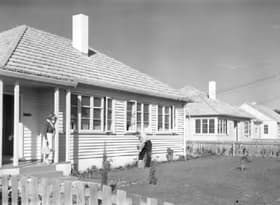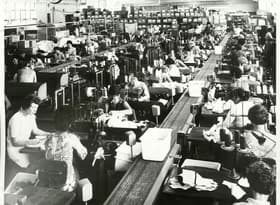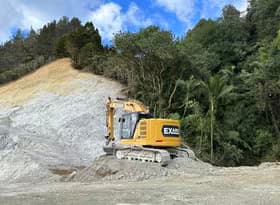
Investors unlikely to drive housing recovery
The government has relaxed tax rules for property investors, and will do so again in April next year, and it has also reduced the bright-line test. But since March, seasonally adjusted house sales volumes have slipped to a 15-month low. Our analysis looks at whether the government’s changes are likely to encourage many more investors into the market.
Previous changes have mostly made things tougher for investors
Most housing policy changes throughout the last 11 years have made conditions more difficult for property investors. Although many policies have affected the wider market at the same time, often the focus on investors in policy changes is clear to see.
- The introduction and subsequent tightening of loan-to-value ratio (LVR) restrictions between 2013 and 2016
- The introduction and extensions of the bright-line test between 2015 and 2021
- The reduced ability to claim mortgage interest as a tax-deductible expense from 2021 onwards
The only pockets of relief for investors were a slight easing of the LVR restrictions during 2018 and 2019 (although these changes were around the same time as the bright-line test was extended to five years), and a 10-month period in 2020/21 during the COVID-19 pandemic when the LVR restrictions were removed completely.
Many of the previous policy changes show through clearly in Chart 1, which presents investors’ share of all new mortgage lending. In particular:
- the 40% deposit requirement from October 2016 slashed investors’ share from 35% to 24%
- the extension of the bright-line test to five years from April 2018 reduced investors’ share from 24% to 18%
- the removal of LVR restrictions boosted investors’ share from 20% to 26%
- the reimposition of LVR restrictions, along with the tax changes and extension of the bright-line test to 10 years pulled investors’ share down from 26% to 17%.
From April this year, tax deductibility of mortgage interest has been lifted back up from 60% to 80%, returning to 100% from April 2025. The bright-line test has also been reduced to two years from July this year. LVR restrictions were also reduced from a 35% deposit requirement to a 30% deposit requirement, although this change has been accompanied by the introduction of a debt-to-income restriction of seven times income for investors – albeit more generous than the six times income for owner-occupiers.
We’ve seen a slight lift in investors’ share of lending this year, up from 17% in February to a three-year high of 20% in April – similar to the short-lived effect of the LVR easing at the start of 2018. Can we expect more of a lift in investor demand for property in coming months?
Negative cashflow is almost inescapable
We’ve run the numbers around New Zealand on how much a property investor would need to top up the mortgage on an average property, and the results are not pretty reading. Based on average house prices and average rents, the average top-up required across the entire country would be $1,125 per fortnight, or $29,241 per year – and that’s before other costs such as rates, insurance, and property management fees are considered.1 Only Wairoa, Grey, Ruapehu, and Buller Districts are cashflow-positive when comparing rental income and mortgage payments (see Chart 2).
The problem for property investors is that rental yields are low, both by historical standards and relative to benchmark interest rates. Chart 3 compares average yields over the last three decades to inflation-adjusted long-term government bond rates. The average gap between these two series, or implied risk premium for rental property, over this period is about 1.2 percentage points. However, the risk premium currently sits at about 0.5 percentage points, and it has not been as large as the historical average since April 2022 – when interest rates were surging upwards as inflation spiralled out of control.
Long story short, if owning a rental property was simply about generating income from your money, no one would do it. Putting your money in the bank and doing no work gets you a similar income return as buying a rental property and doing all the additional work associated with it.
Chart 4 looks at the difference between the current risk premium for rental property with the average risk premium over the last 30 years by local authority area. Only eight areas have risk premiums above their long-term average. There is some correlation between the areas that are the best performers in terms of cashflow and the ones with the best risk premium relative to history, but it is not a strong correlation.
Why would investors buy right now?
Against this backdrop, it is hard to envisage investors rushing back into the property market at the moment. Even with the changes to tax rules by the government, potential investors are still faced with the prospect of having to top up the mortgage on their rental property by thousands, or even tens of thousands, of dollars per year. Soaring insurance and local government rates bills are also adding to the costs faced by investors.
Presented with these figures, the only conceivable reason an investor might look to purchase at the moment is the anticipation of capital gains while they own the property. But even that hope seems questionable for now.
One of the interesting aspects of Chart 3 is the extent to which large movements in the real bond rate precede periods of strong house price growth. Much lower interest rates in 2002/03, 2011, and 2020 were followed by rapid house price inflation (not always immediately – it took some time for house price growth to accelerate after 2011, but real bond rates also remained low for an extended period). Similarly, higher interest rates in 2007 and 2022 saw significant house price falls occur.
Higher real interest rates than we have seen for more than a decade suggest there is little scope for house price rises in the near-term – a conclusion that aligns with our subdued forecasts for nationwide house prices, which we expect to rise by an average of just 2.2%pa over the next five years, to still be below their 2021 peak by 2029.
The other cautionary note we would sound is that sometimes the areas with the “least bad” cashflow are ones that have less scope for capital gains over the medium term. For example, an average property in Wairoa would currently provide positive cashflow of $113 per fortnight (excluding rates, insurance, and other operating costs). But when the Global Financial Crisis hit after the coastal property boom in the 2000s, house prices in Wairoa fell 43% over the six years to December 2014 (a 49% decline in real terms). Almost no amount of rental income is going to make up for your asset halving in value.
Wairoa wasn’t the only area where property values seemed to become disconnected from economic fundamentals during the property boom of the 2000s. Other areas with house price declines of more than 20% after the Global Financial Crisis included Far North, Kaipara, Ōtorohanga, South Waikato, Waitomo, Kawerau, Ōpōtiki, Gisborne, and Ruapehu.
This time around, the biggest house price falls to date have been concentrated in the Wellington Region, reflecting the flow-on effects of cutbacks in central government employment and spending. But over the next few years, as the outflow of Kiwis to Australia continues, keep a wary eye on areas with slowing population growth that are also exposed to a limited number of export industries (eg, forestry). House prices in these areas could continue to track downwards for 2-4 years longer than the nationwide average.
Housing demand to stay soft
House prices are still overinflated compared to both personal incomes (for owner-occupiers) and rental incomes (for investors). Interest rate declines throughout 2025 will lead to some reduction in debt-servicing costs, but they seem unlikely to entice a lot more buyers into the housing market – particularly given continued weakness in the labour market and broader economic conditions. We expect demand in the housing market to remain subdued throughout the next 18 months, with most investors only being interested in properties being sold at a sharp price due to existing owners being under financial pressure.
2 We have assumed an interest-only mortgage covering the entire value of the property with a mortgage rate of 6.5%. Although investors currently require a 30% deposit when borrowing, we assume that this deposit is met by equity in an existing property, so the purchase of an investment property results in new lending equal to 100% of the property’s value.






















